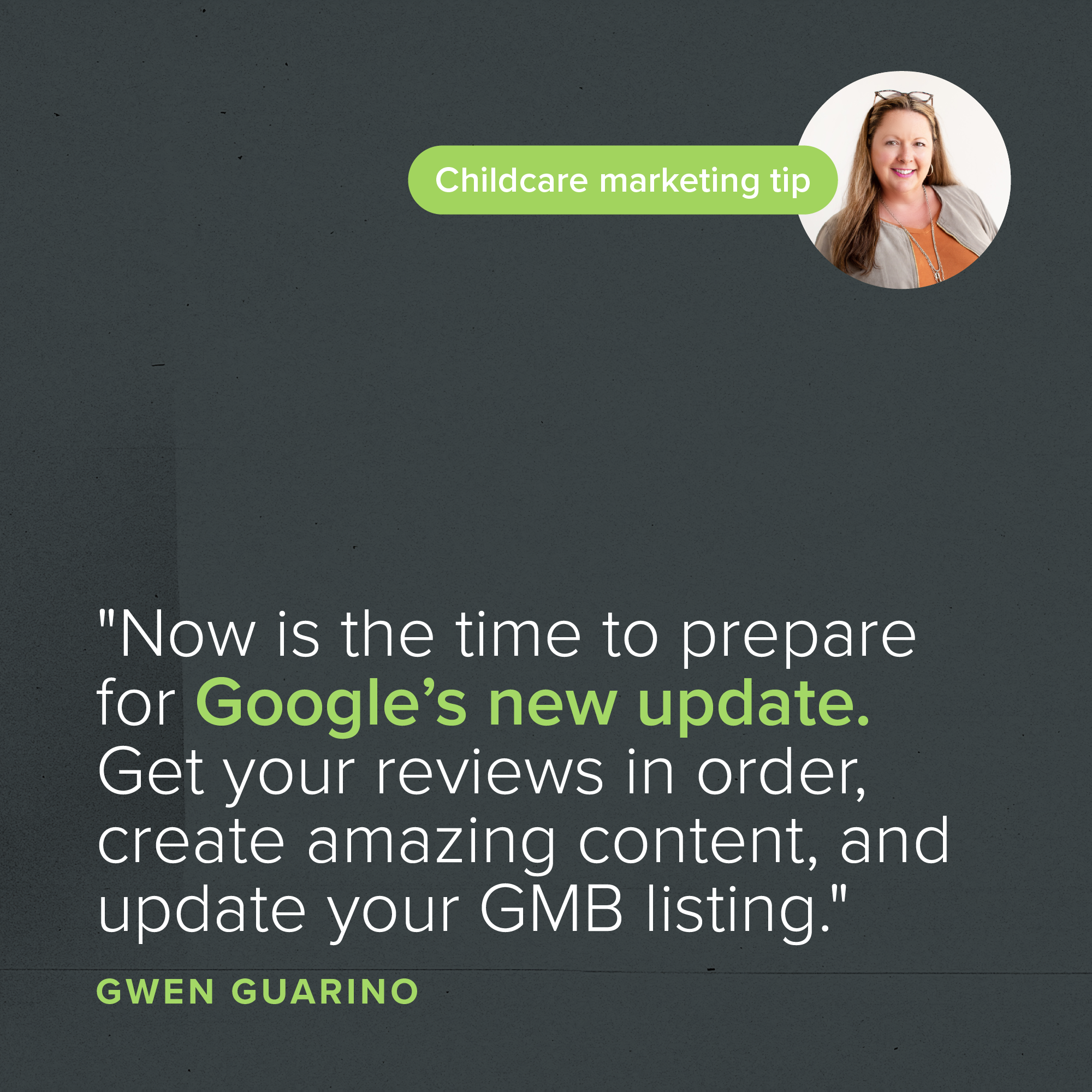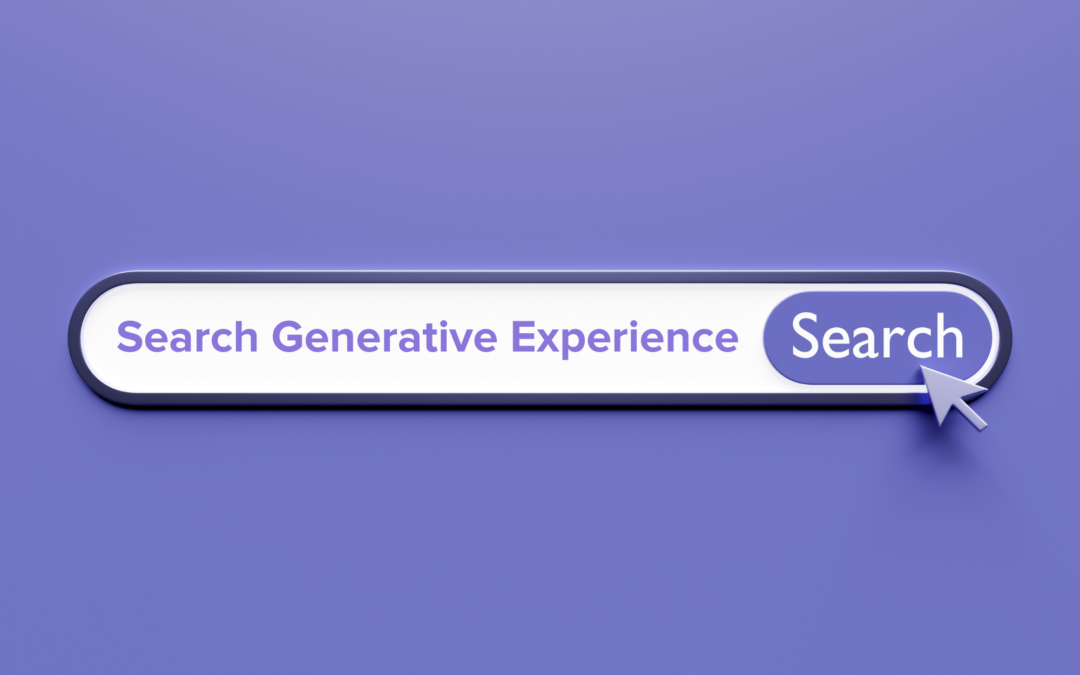Every day, it seems there’s a new development in artificial intelligence (AI) — something new ChatGPT can do for you. It’s incredible… and overwhelming. You might feel behind the times or even wonder if it’s worth trying to keep up.
We get it. With so many weekly changes and updates, it’s enough to make your head spin. As a childcare center owner, it’s natural to wonder if you even need all those bells and whistles. And maybe you don’t.
But…
In this post, we’re talking about Google’s newest update — Search Generative Experience (SGE) — which you definitely need to know.
Google’s Search Generative Experience (SGE)
Search Generative Experience is Google’s newest iteration of Search. It’s a huge leap forward. Google Search has been around since 1998, and since then, it’s become the world’s most popular search engine.
Generations have grown up with the platform, and it’s evolved from a startup to a noun to a verb to a household name. Today, everyone knows what Google Search looks like. Google SGE is about to change that.
This next-gen search adds AI (artificial intelligence) to the mix. Search Generative Experience uses AI to respond to user queries more intuitively, which helps you find what you’re looking for faster and more easily.
You can use it to get a jumpstart on writing a draft or generating imagery. You can use it to ask complex and description-based questions to get a specific answer more quickly.
The AI also allows you to ask follow-up questions to your initial query, letting you get closer to what you’re looking for more efficiently than before. Rather than trying search upon search to find something specific, you get the information you need with just a few queries.
Why does this matter? And why would Google spend so many resources to roll out such an extensive update? The answer is that a whopping 80% of all searches are informational. People search for information far more often than for products to purchase.
What This Means for You
When a parent searches for “best daycare near me,” here’s what happens:
- They type their search query: “best daycare near me.”
- Google delivers a list of results.
- The parent reads reviews and ratings.
- The parent visits the best candidates’ websites to learn more about each school’s tuition, programs, facilities, faculty, menus, etc.
Once Google rolls out Search Generative Experience, a parent can start with a specific query, e.g., “What’s the best daycare near me for nine-year-olds?” In that case, here’s what Google SGE will show them:
- They’ll receive paid ad listings for schools that match the query, as well as organic listings.
- They’ll see informational blog content, statistics, and location information.
- They can ask follow-up questions based on these results to further narrow their search. For example, they could add, “Are any of the listed schools nut-free?”
Preparing for Google Search Generative Experience
The time to prepare for this update is now. Below are five tips to help you level up your search game and keep you ahead of your competitors.
Tip #1: Prioritize Ratings and Reviews
Google SGE filters above a ratings threshold of 4.0 (subject to change; some locations may require ratings above 4.5), meaning your school won’t appear in search results if your rating falls below that number. To avoid disappearing from prospects’ search results, now is the time to generate reviews from happy families and get consistent about reputation management.

Google SGE also pulls information about your business directly from your reviews — information like tuition, programs, teachers, and more. So, if users share incorrect information in reviews, that information could make it into search results. That’s why it’s imperative to consistently monitor and address negative reviews (as well as encourage positive ones).
Of course, we’re here for you if you need help with reputation management!
Tip #2: Update Your Content
Since SGE is all about answering user questions, providing updated, relevant content on your website and your Google My Business listing is crucial. Include your business information, current hours, special programs, menus, etc.
High-quality blog content is also vital. It helps you appear in the Informational Box section of search results (which is like a Featured Snippet).
Tip #3: Create Valuable Content
Just as Google anticipated the need for SGE because most internet searches looked for information, you can anticipate what people will search for regarding your school and provide the answers.
Similar to FAQs, if you dedicate sections or entire pages of your website to answering questions you know prospects will ask, you’ll have a greater chance of your content appearing in SGE results.
You just need to know your audience. Let’s return to our previous example of the “best daycare near me for a nine-year-old” that’s also “nut-free.” Did you know that almost 6% of U.S. children have a food allergy? That’s good information to know when your target audience includes parents.
If your school is nut-free or observes other policies regarding food allergies, you can create content explaining why you eliminated those foods from your facility. Doing so will answer questions from concerned families, make their decisions easier, and help boost your SEO in SGE.
Tip #4: Run Paid Ads
Paid ads will still appear above organic search results (or at least near the top) in Search Generative Experience, so they’ll ensure you remain visible even if you do nothing else.
Google earns 78% of its total revenue from paid ads, so they’re not going anywhere. It’s a solid marketing strategy that earns businesses an average of $8 for every $1 spent (though our average is much higher than that). It’s best to start early with paid ads to get a head start on your rankings.
Tip #5: Consider Listing Your Tuition
Opinions on this practice vary, but with Search Generative Experience, there’s a very good reason to take the plunge and list your tuition if you don’t already. SGE might do it for you, whether you like it or not.
Queries concerning tuition are popular. If you list it, you’ll rise above competitors that don’t.
SGE pulls information about your rates from reviews and comments and could misconstrue it, even if commenters don’t reference an exact amount. For example, SGE could say your center is “more expensive than ABC Child Care.” With this and some deductive reasoning, the AI might generate its own idea of your tuition and list it in search results.

Finally, listing your tuition on your website helps eliminate prospects who aren’t in your target audience. When you run paid ads, you want every click to count. We certainly don’t want our clients paying for clicks from people who can’t afford the tuition in the first place.
Listing your tuition — and only serving ads to relevant audiences — maximizes your budget.
Stay Tuned
We’re still waiting for a roll-out date from Google for Search Generative Experience, but we’ll keep you posted. Now is the time to prepare. Get your reviews in order, create amazing content, publish it on your website, and update your Google My Business listing.
You have the time to get ahead and stay ahead of your competitors, so don’t waste it. If you’d like a hand with your preparations, reach out. We’re happy to help.
Subscribe
Sign up with your email address to receive news and updates.

